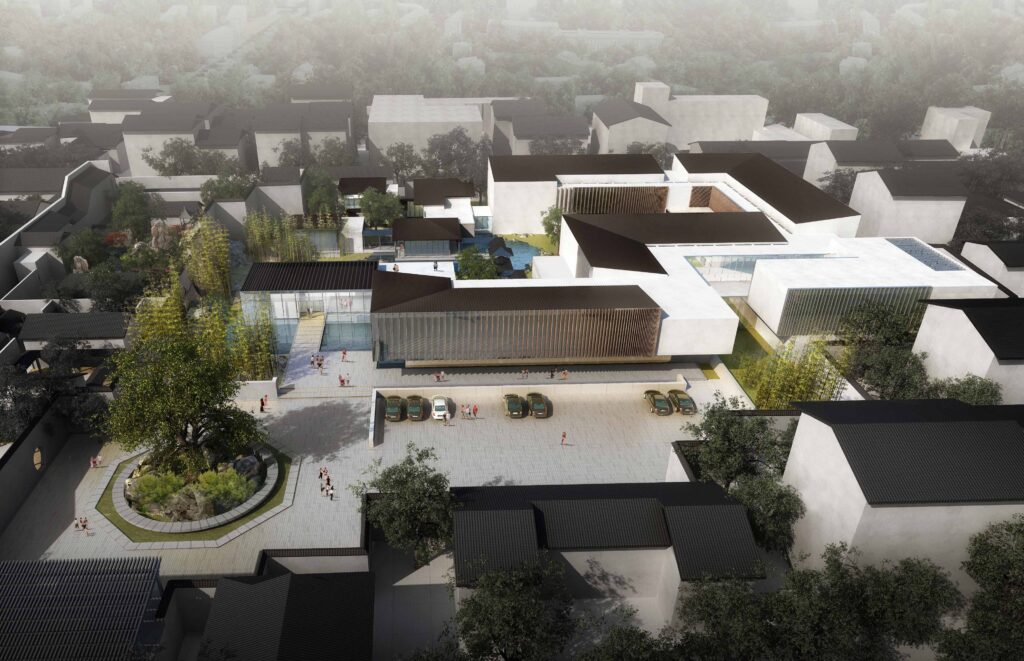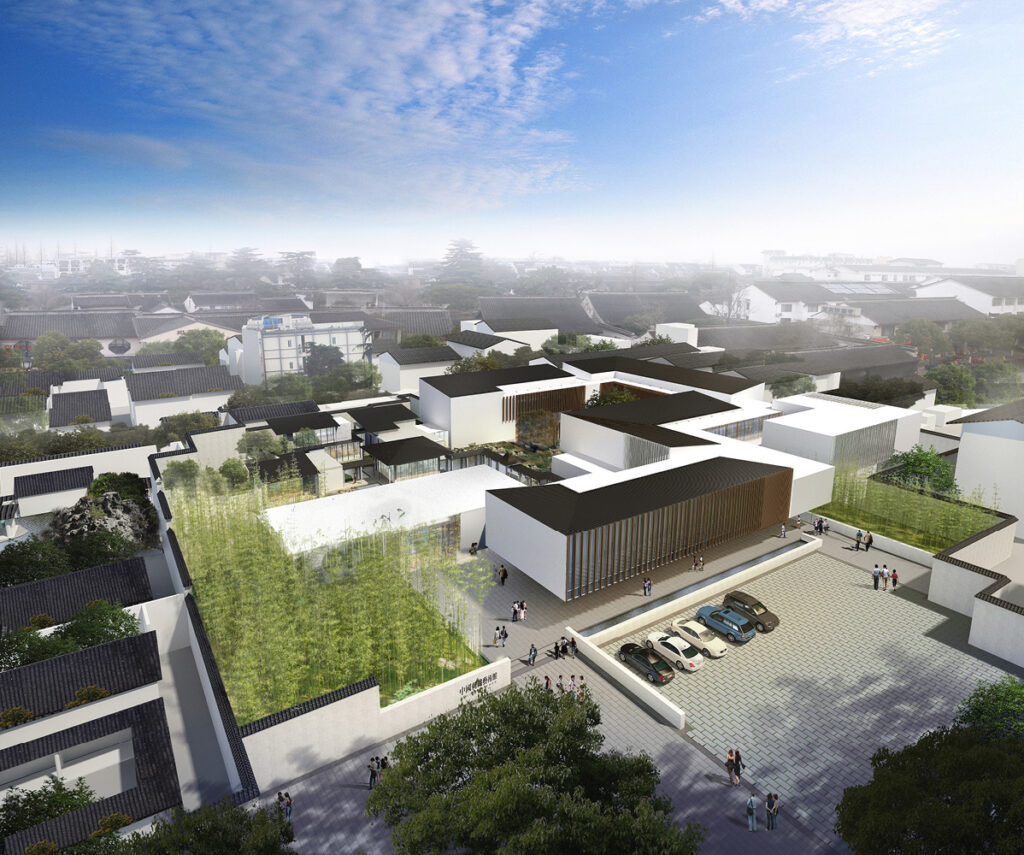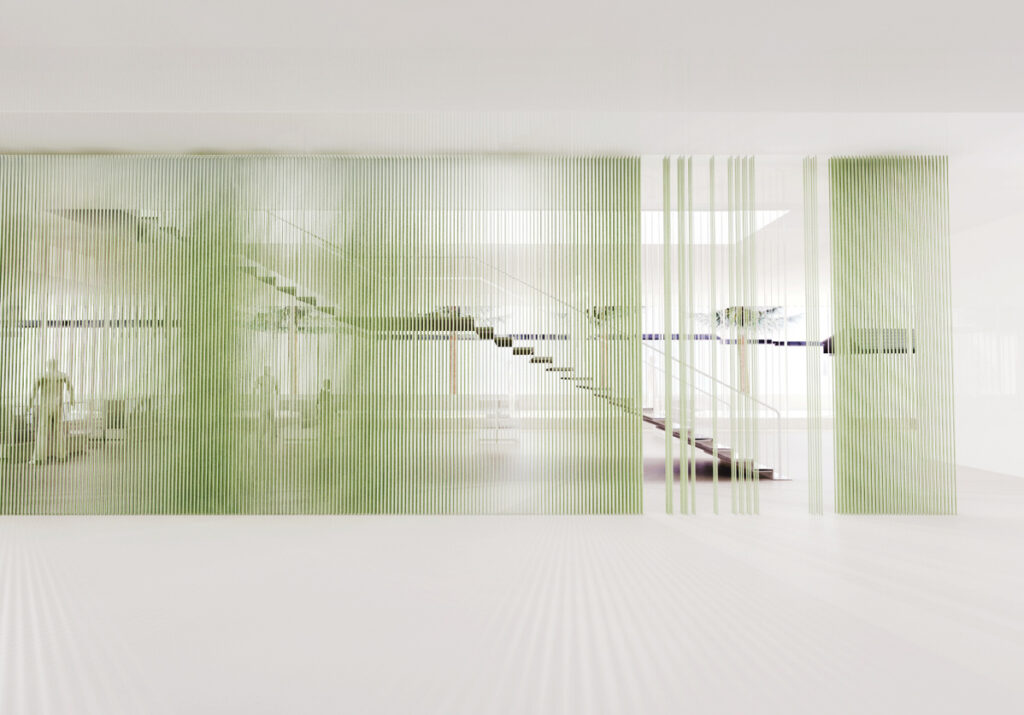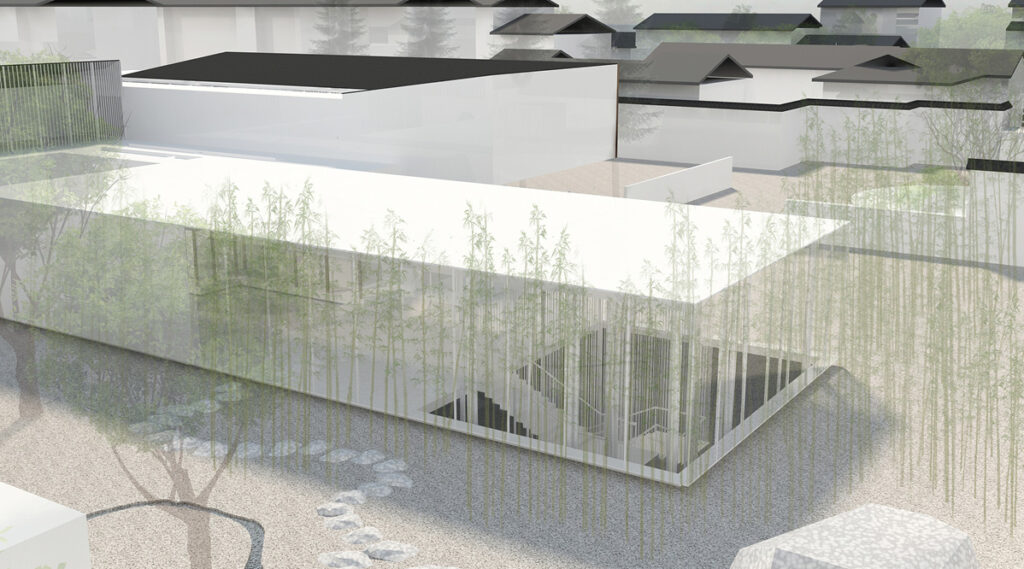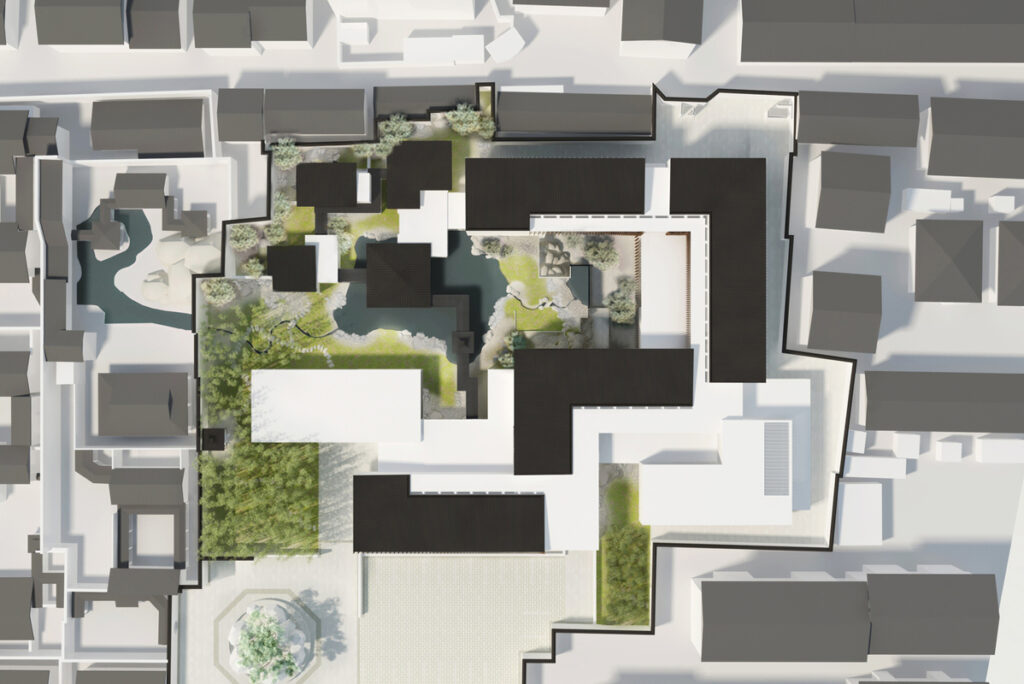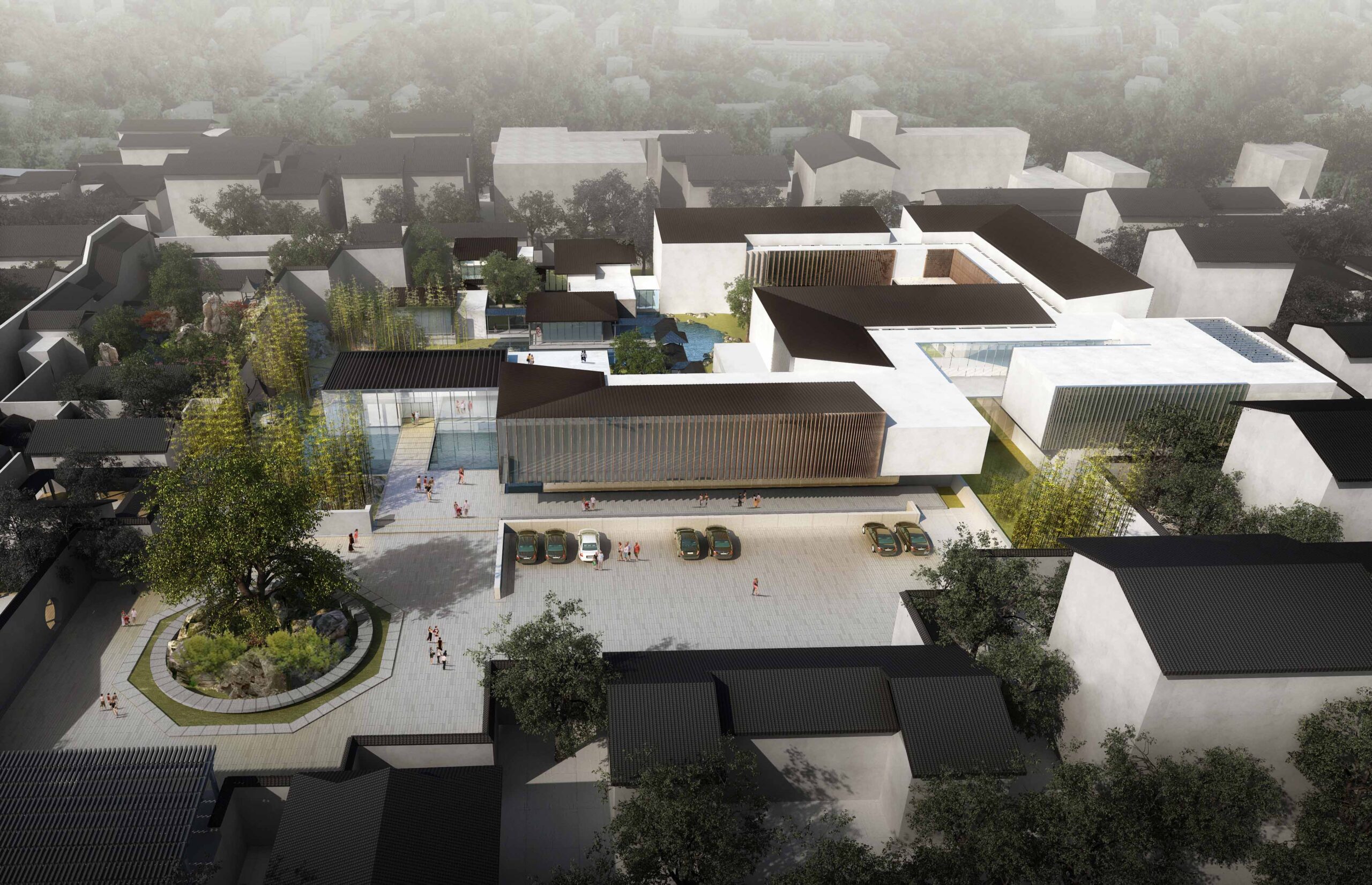Design: 2010-2014
The China Silk Embroidery Art Museum is located on the west side of Suzhou, China, housing a UNESCO World Heritage Garden and Wang Ao Temple. With the exception of a few large-scale public buildings, the context is residential and richly historic with the history of Suzhou’s embroidery art. The design for the museum distinguishes architectural volumes by different programmatic functions, allocating exhibition space to the Southeast while locating reception functions to the West. Entering through a gate, visitors pass through a glass reception pavilion before circulating through the galleries of artifacts and masterpieces, following the sequential steps of embroidery production: from embroidery design to silk dying, weaving, and mounting for display.
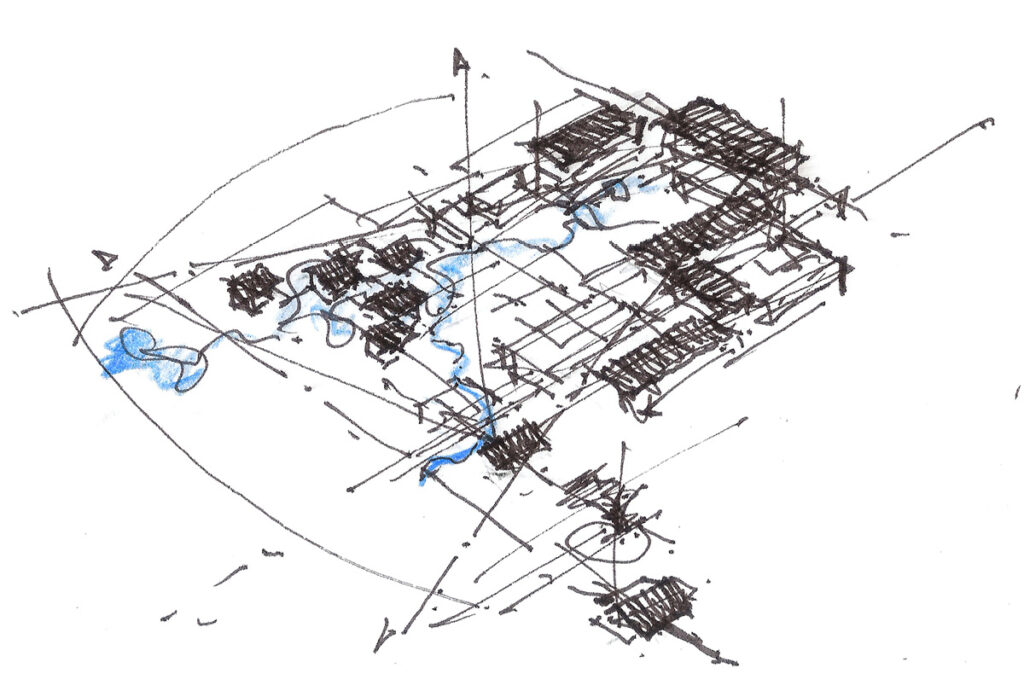
The museum integrates the UNESCO Garden through an array of small-scale volumes within the landscape, expanding further into small courtyards. The space fluctuates through harmonic oppositions, from open to enclosed spaces both narrow and wide. While the embroidery galleries and studios require indirect lighting, the public spaces adjacent to the courtyard access its abundant daylight.
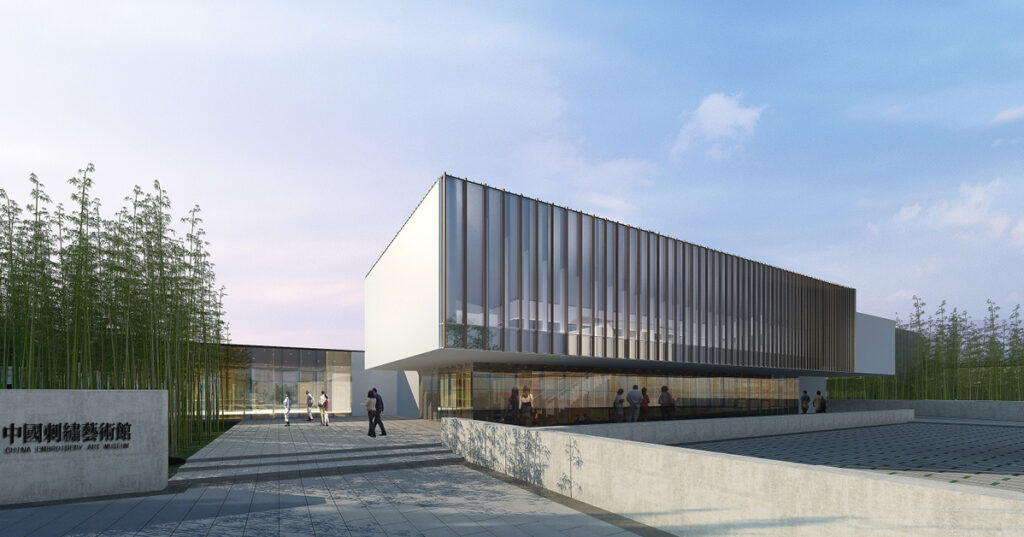
Project Gallery
